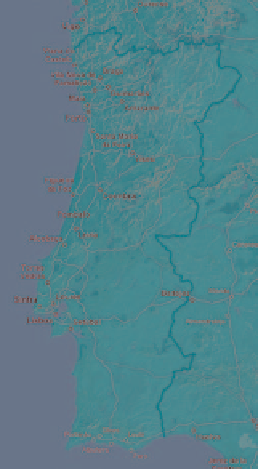Environmental Engineering Reference
In-Depth Information
Urban development and new infrastructures on a catchment have negative
effects on the local water quality and quantity balance. The hydrological regime is
changed, with increased volumes of stormwater runoff, higher peak flow rates and
flood water levels as well as lower base flows in watercourses, reduction of soil
moisture and groundwater recharge. Additionally, there is an increase in pollutant
loads diverted into sewers or surface waters. The new demand of water for different
uses (domestic and industrial) must be considered - it can place pressure on the
local water system (surface or groundwater) or represent an important cost in treat-
ing water for consumption, in the case of lack of quality of the local resources.
A new airport will produce two kinds of wastewater: stormwater from the paved
areas (runways, parking lots, buildings and roads) and sewage generated by the
airport restaurants, toilets and maintenance facilities. These should represent
important water pollution sources that need to be managed in accordance with the
new demands from the Water Framework Directive.
The Two Airport Alternative Locations
The projected NLA area was estimated to be a rectangle of around 2,000 ha.
The distance between the two alternative locations for the new airport is about 40 km,
equal to the distance of each place to Lisbon. In Fig.
1
the two alternative locations
Fig. 1
Alternative locations







